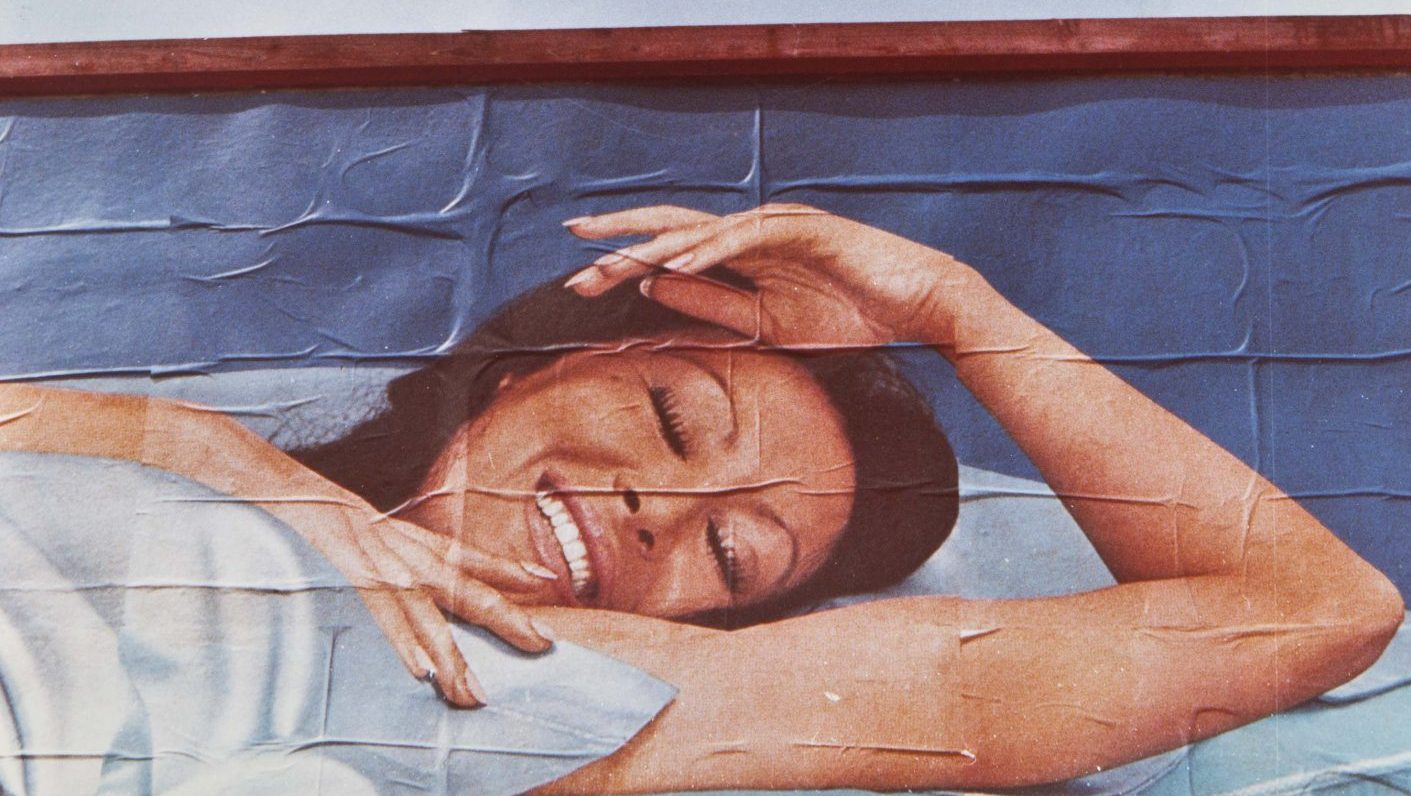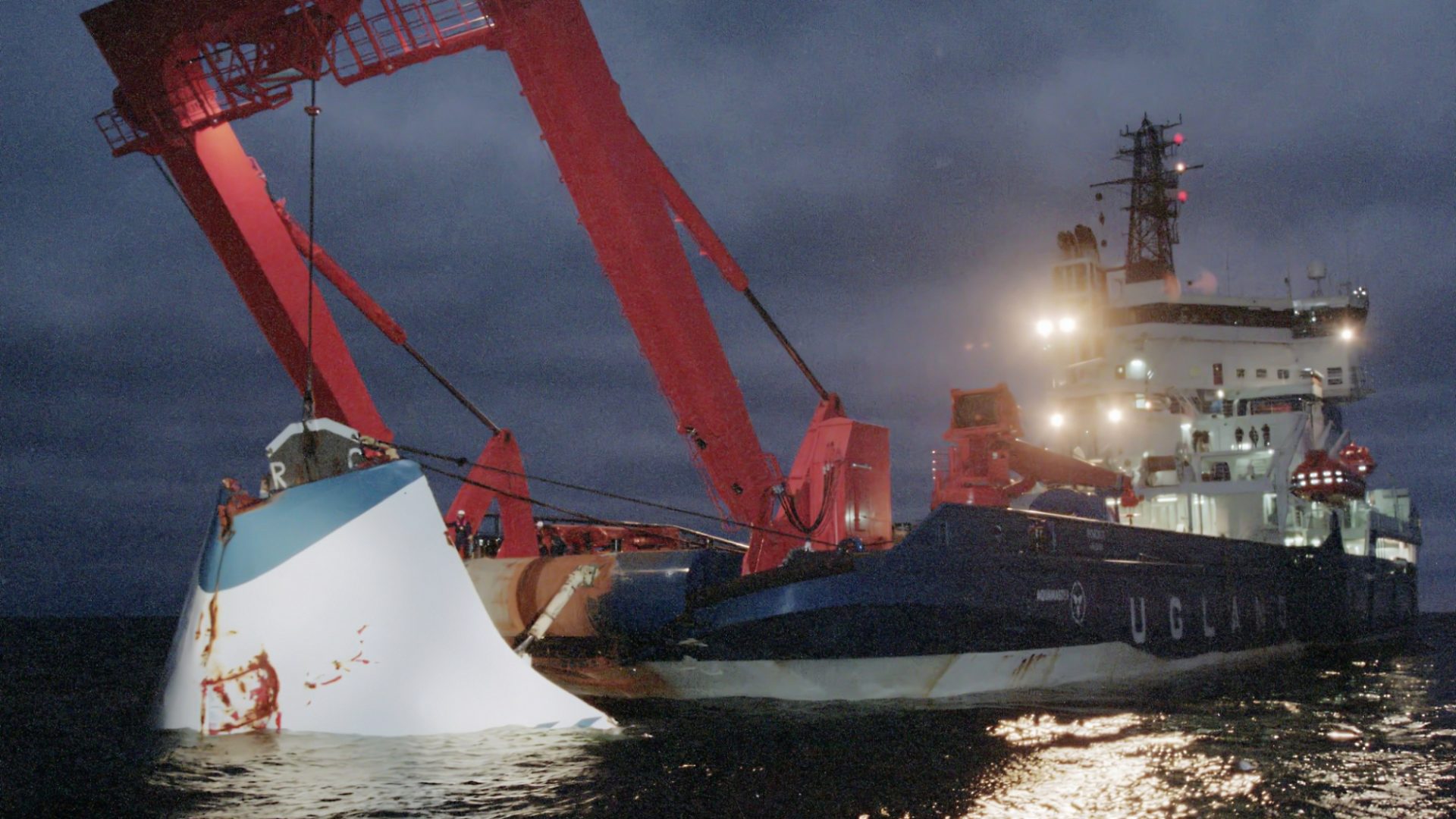A friend of the Italian artist-photographer Luigi Ghirri (1943-1992) described him as “a work-from-home astronaut”, a singular vocation that granted him access to adventure and possibility in the lowliest and most earthbound of places.
Dedicated to this lesser known but remarkable figure, Luigi Ghirri: Viaggi (Journeys), at MASI Lugano in Switzerland, opens with his photograph of crumpled wrapping paper, the printed gold stars twinkling in hopeful defiance of the waste paper basket. In another, plastic globes viewed through the gaps in a shuttered shop window make their silent petition for freedom.
Ghirri’s unmistakable kind of visual poetry is at work again as a duty-free model aeroplane on a suburban windowsill takes flight among glass-reflected clouds, as if a daydream of distant places has materialised.
Ghirri’s instinct to situate “the ordinary in relation to the infinite” is essential to the unique character of his picture-making, says curator James Lingwood, who until 2022 was the co-director of Artangel, a London-based institution that since 1985 has curated and commissioned innovative site-specific art works, by artists including Mike Kelley, Rachel Whiteread, Jeremy Deller and Brian Eno.
For him, the exhibition is the fulfilment of a personal passion for a complicated and somewhat mysterious figure, a travel photographer who favoured the beaten track, and used ordinary Kodachrome film, which he had processed at the local chemist just like every other holidaymaker.
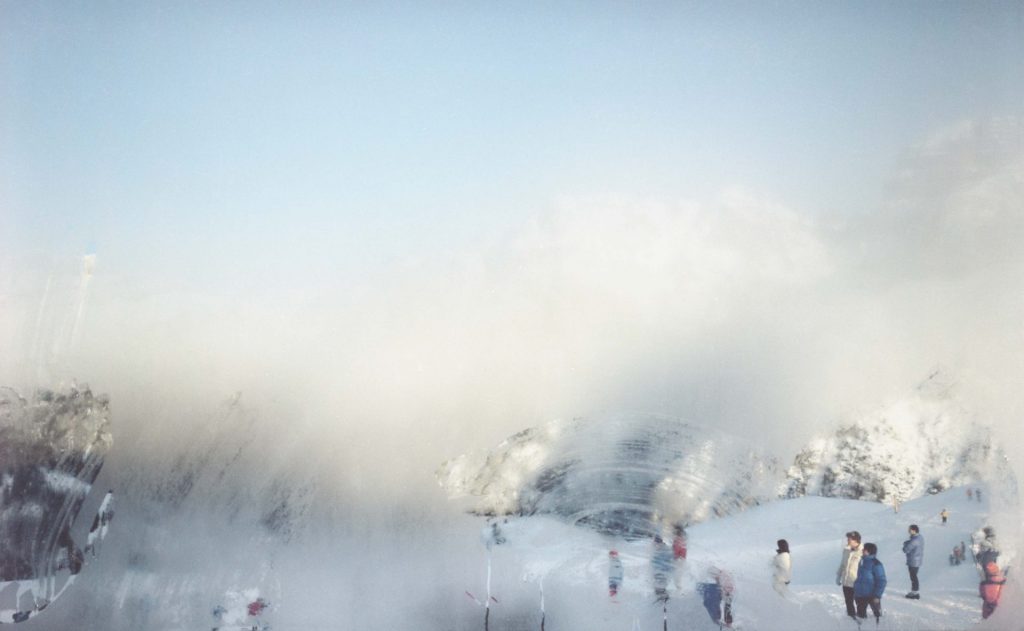
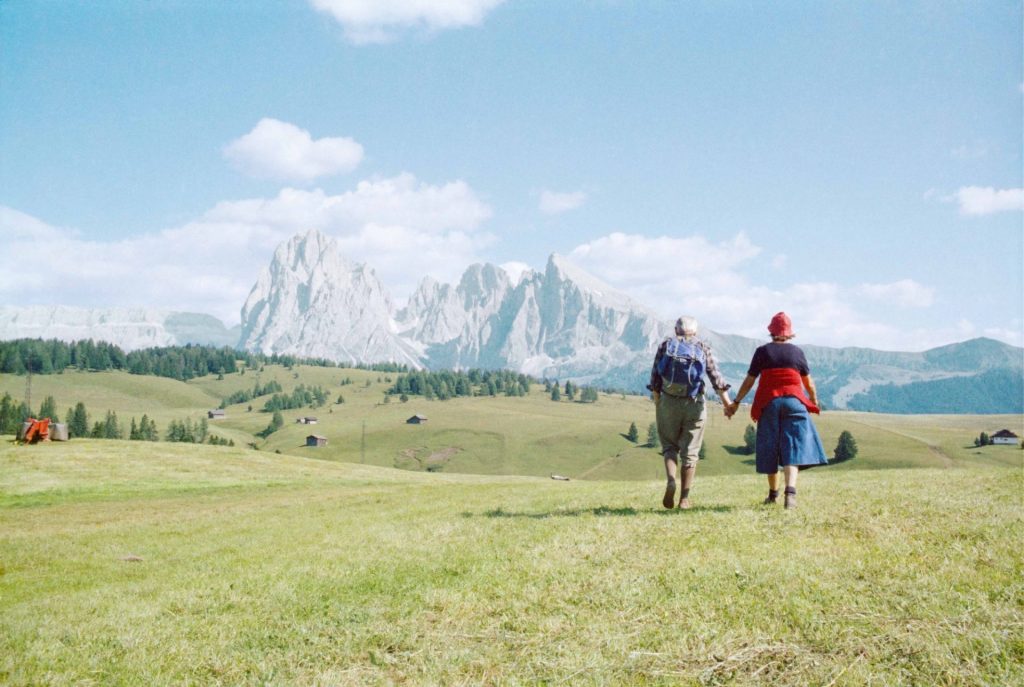
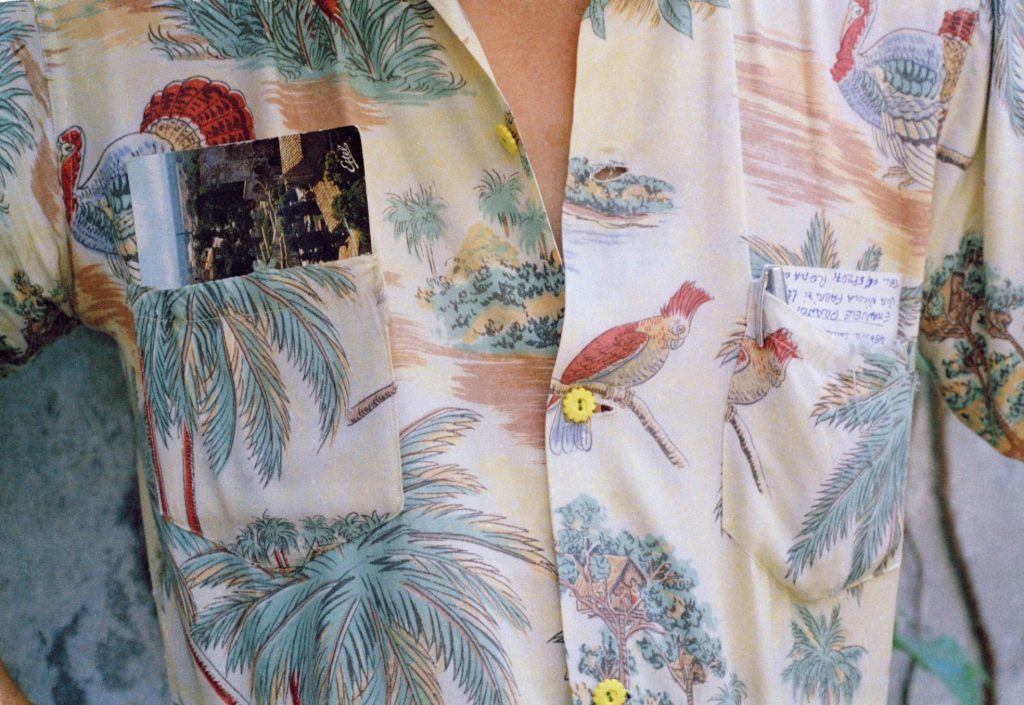
It’s possible to detect a hint of faux naivety, or even belligerence, inflecting Ghirri’s explanation for his choice of colour film: “The real world is in colour, and because colour film has been invented,” he said. But looking at his pictures, his words seem instead to indicate a more straightforward wish to engage in a dialogue with the medium of photography, in a world which by the 1970s was already much photographed, and mediated through print and film, and specifically commercial imagery. Today, his perceptive insights into the nature of photography, and of the role of images in the rapidly growing tourism industry of the 1970s, seem decidedly ahead of their time.
Comprising around 140 vintage colour prints on loan from private and public collections, with many drawn from the photographer’s estate and CSAC (Centro Studi e Archivio della Comunicazione) in Parma, the exhibition spans the years between 1970 and Ghirri’s sudden death in 1992.
As its title makes clear, its focus is on journeys, which, says Lingwood, “take place as much in the mind of the viewer as in the activity of the photographer”. His work reflects on the act of taking pictures, amounting to “a journey through images”, in which pictures are intended to be viewed in groups or series.
Broadly chronological, the exhibition follows the major themes of Ghirri’s work, with Lingwood’s hang emphasising the connections between pictures, and favoured motifs and devices, such as benches, empty or occupied, and people taking their own photographs.
Early on, his travels were often close to his hometown of Modena in the northern Italian province of Emilia-Romagna, from where he made short weekend excursions to local tourist spots. Later on he travelled further afield, though still almost exclusively in Italy, but it was Atlante, 1973, his series of close-up photographs of his home atlas, that first brought him recognition following exhibitions in Turin and in Germany in 1975.
Ghirri took up photography seriously in 1970 aged 27, having spent the previous decade working as a surveyor, a job that Lingwood sees as a significant influence on his work: “Ghirri was attuned to measuring spaces and the distance between things”, he writes, and it is these spaces between things – the ordinariness of the wrapping paper in relation to the infinite expanse of the universe – that give his pictures their weight, and wit.
The perceptual gap that separates the human eye and the way a camera “sees” as an eye without the mediating intelligence of a brain is very often essential to the impact of Ghirri’s images. A smiling woman on a billboard looks outrageously artificial beneath an overcast sky, and it is only the traces of bricks beneath the poster that allow us to make sense of its jarring juxtaposition.
A similar thing happens where a glimpse of blue sky on a poster is papered over a brick wall, creating the enjoyable illusion of a grand vista seen through a crumbling edifice. In these pictures, Ghirri said, he explored “the gap between what we are and the image of what we’re supposed to be”; they were never manipulated, but scenes that existed out in the world.
In documenting encounters between printed images and the real world, Ghirri’s photographs lock on to a cultural shift that occurred in the 1970s, as the opportunities for ordinary people to become consumers gathered pace. Suddenly, he wrote: “Reality is being transformed into a colossal photograph, and the photomontage already exists: it’s called the real world.”
It is just this sense of the world as a stage or set that is revealed in some of Ghirri’s most brilliant pictures, such as his 1979 photo Bressanone, in which the natural and artificial, real and imagined merge so completely that we are never entirely clear about where one ends and the other begins.
Overhanging branches in the foreground assure us of the veracity of the view, while also establishing a sense of distance, as we look through the trees and down towards a valley, populated with perfectly identical red-roofed houses. We must surely be looking at a marketing poster for a holiday resort, but left uncertain, we are suspended in the dreamy promise of an advertising campaign.
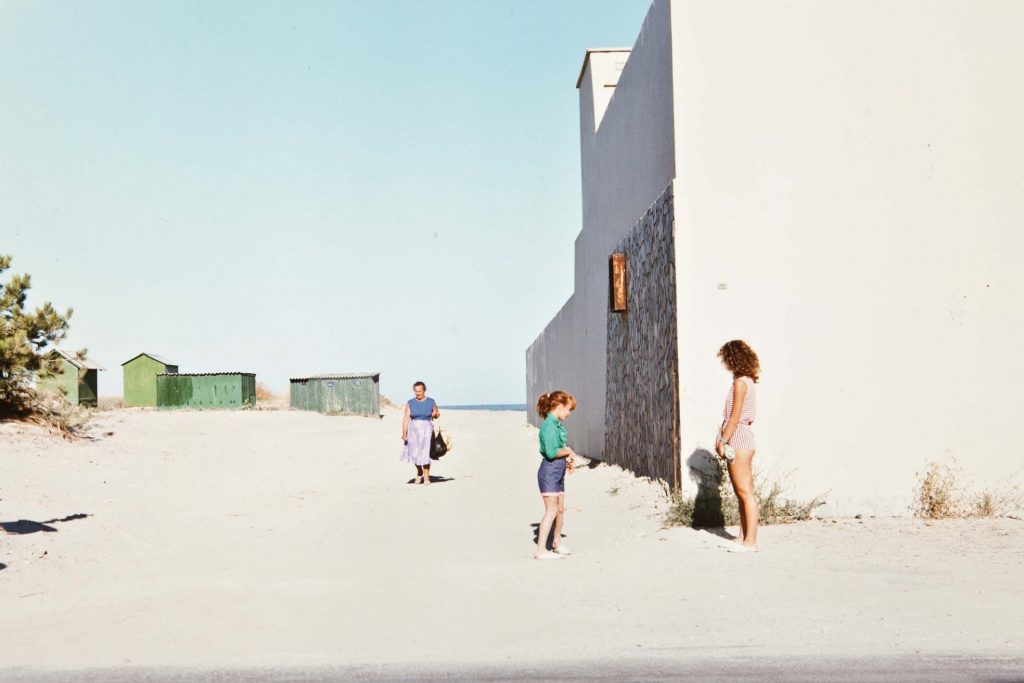
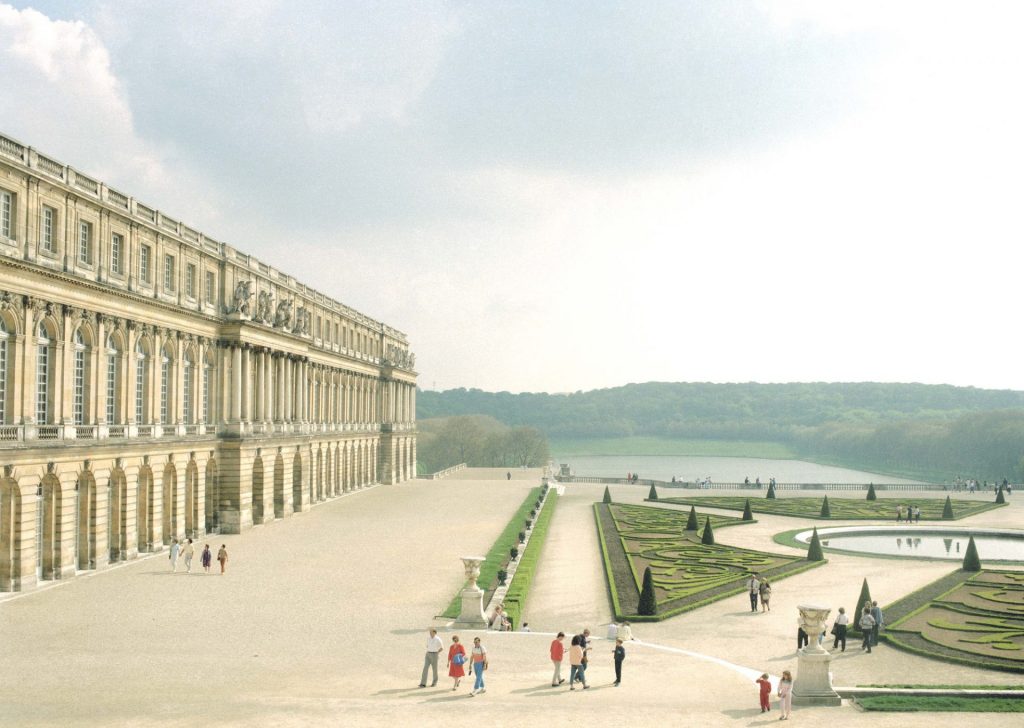
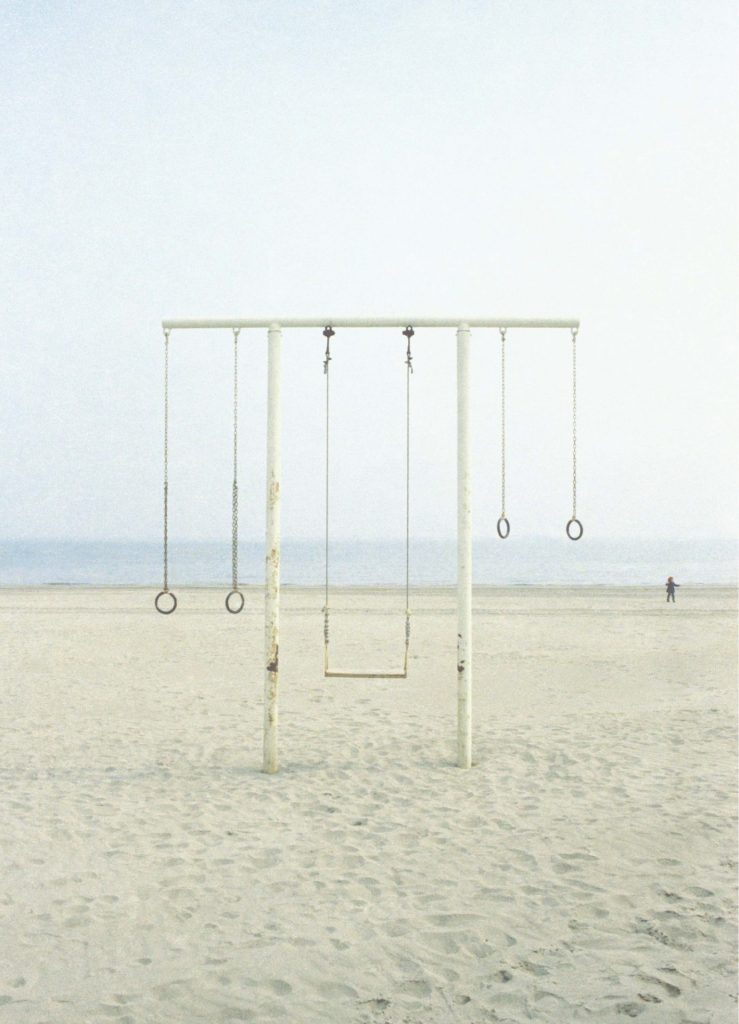
It’s a sleight of hand that briefly allows us sight of the way that images shape our perceptions and relationships with places.
Ghirri does something similar in photographs of tourists in popular beauty spots in the Alps and Dolomites, in which real and printed views of beauty spots become increasingly interchangeable. In Hergiswil, 1973, a family admire a large billboard showing a beauty spot; in Alpe di Siusi, 1979, hanging nearby, a couple stride off into the countryside like a perfectly composed tourist board advert.
At points, these pictures of people going about their business inevitably recall Martin Parr, and to a lesser extent Tony Ray-Jones, both celebrated photographers of people – and specifically the British – at leisure. But where Parr in particular tends to satirise his subjects, Ghirri is far gentler (and far less interested in people), his figures seen mostly from behind, where they serve less as portraits and more as anonymous proxies for the viewer.
He is similarly reticent when it comes to his own self-portrait, which is presented in the middle of the exhibition, in a section dedicated to “Journeys at Home”, which includes Atlante, the series of photographs of maps that first brought him to public attention. His series Identikit, 1976, was also created within the confines of his home, with photographs of his books and records on shelves, maps, postcards, and occasional dried flowers creating a surprisingly intimate picture of a man whose mind was restless, even when his body was at rest: “I allowed for objects (books, records, etc) to testify to my interests, my knowledge and my imagination, the time I spend reading, listening to music and planning journeys.”
In the 1980s, Ghirri was heavily occupied with commissions, some from Italian provincial tourist boards, but also from the Italian Touring Club and the French Ministry of Culture, for whom he undertook an assignment at Versailles. His pictures take on a slightly different quality from 1980, when he swapped his usual 35mm camera for medium format, which gave better clarity and colour intensity.
The change of camera made it easier to handle complex light conditions, and some of his most outstanding pictures from these years make dramatic use of artificial light against pitch dark night. It’s impossible to look at Porto Recanati, 1984, in which a cafe blazes with light, without thinking of Edward Hopper’s similarly atmospheric paintings.
In Sabbioneta, 1989, the tables are literally turned, as we find ourselves inside an impossibly bright cafe looking out on to a town square. Framed by the cafe interior, the square is rendered artificial, appearing like a stage set, or the eerily depopulated town squares of the Metaphysical painter Giorgio de Chirico, inspiration of the Surrealists.
Such paradoxical inversions are echoes of earlier and equally discombobulating juxtapositions of the real and the artificial: the children’s play equipment on deserted beaches in Lido di Spina, 1974, the plastic palm tree towering over real ones nearby in Bari, 1982.
The same instinct for normalised absurdity lies behind In Scala, a series of photographs of a theme park in Rimini called Italia in Miniatura that Ghirri began in 1977-78, and then revisited in 1985. Here, models of landmarks and features allowed visitors to see Italy in what Ghirri described as a “three-dimensional atlas” that, like pictures in a book, allowed disparate places and times to be seen together. “The Dolomites and the Pirelli Tower, the Autostrada del Sole (which had opened in 1964) and St Peter’s Basilica in Rome (completed four centuries earlier) could be viewed on a rapid tour across centuries and through geographies,” writes Lingwood.
Today the world is so completely saturated with images in ways that Ghirri is unlikely to have fully anticipated, and his photographs could easily have become a rather quaint period piece. Instead, his insights remain penetrating, and perhaps as we become further immersed in a reality comprised of images, the clarity of his vision becomes more, not less pertinent. In contrast, the tarnished dream of air travel for all, which in the 1970s and 80s seemed such an unambiguous marker of modernity, places these pictures firmly in the past.
Thanks to this landmark exhibition, and the efforts of Ghirri’s daughter, Adele Ghirri, director of the Archivio Eredi di Luigi Ghirri in Roncocesi, future generations will bring fresh interpretations to this timely and timeless body of work.
Luigi Ghirri: Viaggi – photographs 1970-1991 is at MASI Lugano, (Museo d’arte della Svizzera Italiana), Switzerland until January 26


